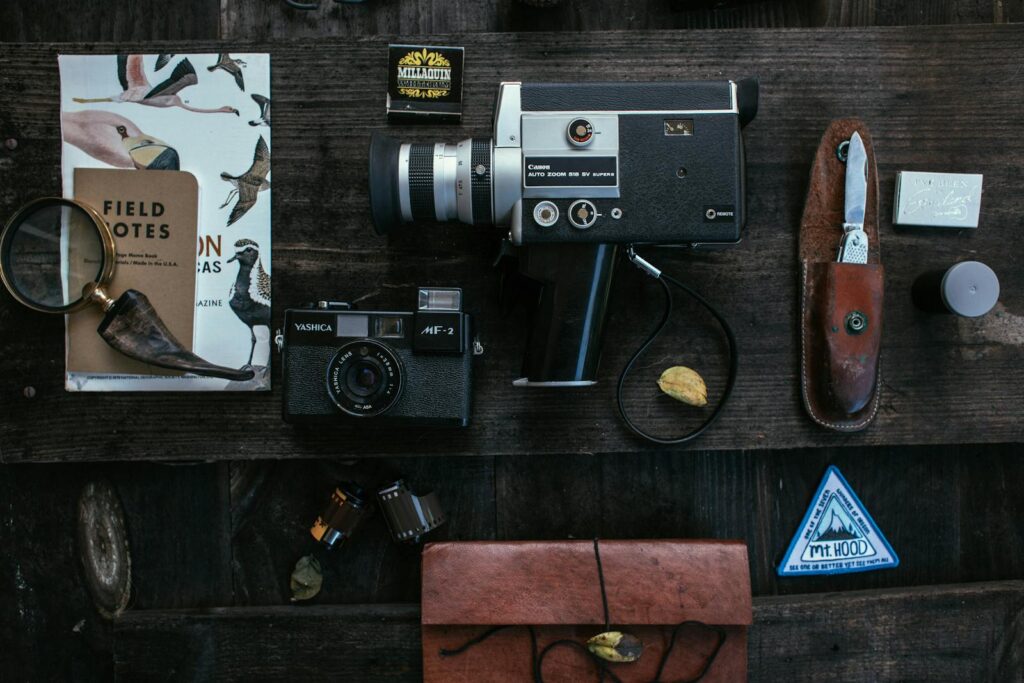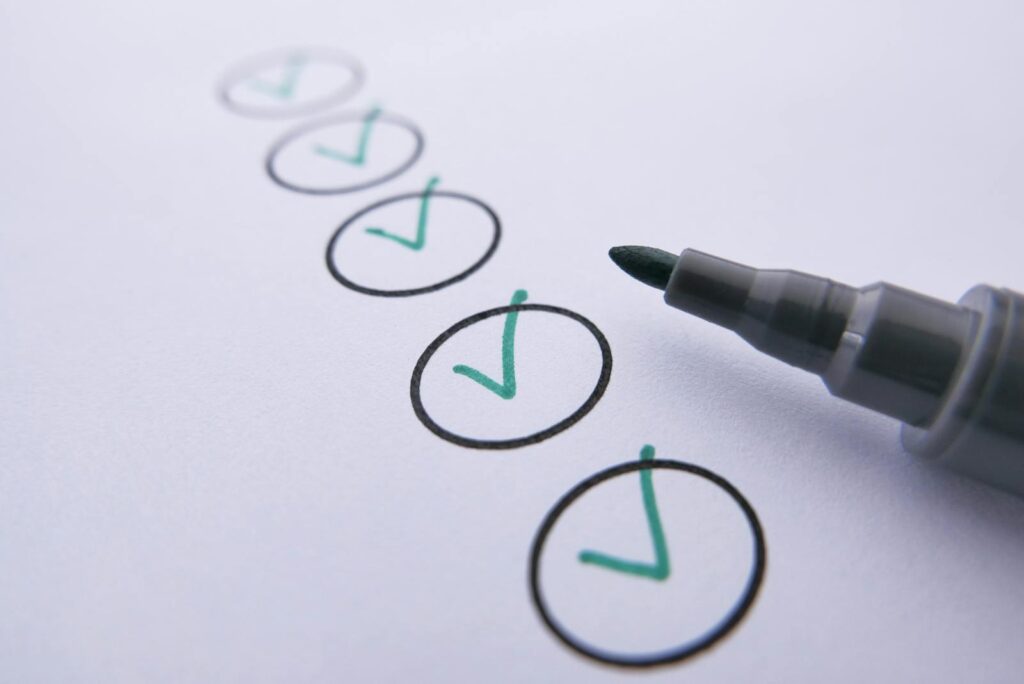Life is filled with countless experiences waiting to be discovered, cherished, and remembered. A lifelist—sometimes called a life list or bucket list—serves as a personalized catalog of experiences, achievements, or observations you hope to accomplish during your lifetime. Unlike fleeting New Year’s resolutions, a well-crafted lifelist becomes a living document that grows with you, providing direction, motivation, and a beautiful record of your journey. Whether you’re documenting bird species you’ve spotted, countries you’ve visited, or personal milestones you’ve achieved, creating and maintaining a lifelist can add richness and purpose to your days. This comprehensive guide will walk you through everything you need to know about starting a meaningful lifelist that you’ll actually maintain for years to come.
Understanding the Purpose of Your Lifelist

Before putting pen to paper or fingers to keyboard, take time to reflect on why you want to create a lifelist in the first place. Your underlying motivation will significantly impact how you structure your list and your commitment to maintaining it over time. Perhaps you’re seeking to bring more intentionality to your leisure time, document personal growth, create a legacy to share with loved ones, or simply remember experiences that might otherwise fade from memory. Some people use lifelists as goal-setting tools with concrete achievements to pursue, while others view them more as living journals that evolve organically. Understanding your “why” isn’t just philosophical—it will directly influence the categories you include, how you organize information, and the systems you develop for updating your list. This purpose will be your anchor when motivation wanes, so be honest with yourself about what truly matters to you.
Choosing the Right Format for Long-Term Success

The format of your lifelist can make the difference between a cherished record and an abandoned project. Digital formats like specialized apps, spreadsheets, or note-taking programs offer searchability, easy updating, and integration with photos or links. Physical formats such as journals, binders, or specially designed lifelist books provide a tangible connection and don’t require technology to access. Many successful lifelist keepers maintain both: a detailed digital version for analysis and organization, alongside a simplified physical version for regular review and reflection. Consider your lifestyle, preferences, and when you’ll most likely update your list—perhaps you prefer jotting notes while traveling (suggesting a portable notebook) or enjoy organizing data (indicating a spreadsheet might work best). Whatever format you choose, prioritize accessibility and ease of updating, as these factors will determine whether your lifelist becomes a lasting companion or a forgotten file.
Determining Categories That Resonate With You

Lifelist categories should reflect your unique interests, values, and aspirations rather than conforming to someone else’s template. Common categories include travel destinations, wildlife observations, culinary experiences, books read, skills mastered, physical achievements, and personal milestones. Consider breaking broad categories into more specific subcategories; for instance, “Travel” might include subcategories for countries, specific landmarks, UNESCO sites, or types of accommodations experienced. When selecting categories, be ruthlessly honest about what truly excites you—not what you think should interest you or what impresses others. A naturalist might dedicate extensive space to plant species identified, while an urban explorer might focus on cities explored by neighborhood. Remember that your categories aren’t set in stone; they can evolve as your interests shift and expand. The key is creating a structure that feels inspiring rather than overwhelming when you look at it.
Setting Achievable Yet Challenging Goals

The most sustainable lifelists balance ambition with realism, containing both readily achievable items and ambitious stretch goals. Consider organizing your list to include short-term goals (achievable within a year), medium-term aspirations (within five years), and long-term dreams (requiring significant planning or resources). Including items of varying difficulty creates a rhythm of regular accomplishment while maintaining long-term motivation toward bigger objectives. When adding items, apply the “excitement test”—if the prospect of completing the item doesn’t generate genuine enthusiasm, reconsider its place on your list. Avoid adding items solely because they seem impressive or because others have them on their lists. Instead, focus on experiences that would bring you authentic joy or meaning. The balance you strike between accessible and ambitious will determine whether your list feels like an inspiring roadmap or an intimidating mountain of unattainable goals.
Creating a System for Regular Updates

Even the most thoughtfully designed lifelist will fail without a consistent update system. Establish a regular schedule for reviewing and updating your list—whether weekly, monthly, quarterly, or tied to specific events like birthdays or the new year. Set calendar reminders or link updates to existing habits (like Sunday morning coffee or the first day of each month) to ensure consistency. Develop a simple method for capturing potential additions when inspiration strikes, perhaps using a notes app on your phone or a small pocket notebook. Some lifelist keepers find success with a two-stage process: quick logging of completed items or new ideas as they occur, followed by more thoughtful integration during scheduled review sessions. Consider creating a ritual around your update sessions—perhaps lighting a candle, brewing a special tea, or finding a particular spot that helps you reflect meaningfully on your experiences. These small touches can transform maintenance from a chore into a cherished practice.
Documenting More Than Just Checkmarks

The most valuable lifelists capture not just what you’ve done but how those experiences affected you. For each completed item, consider documenting the date, location, circumstances, companions, unexpected elements, and—most importantly—your thoughts and feelings about the experience. This approach transforms your lifelist from a simple checklist into a rich autobiographical document. Many experienced lifelist keepers leave space for reflections on how reality compared to expectations, lessons learned, and whether they would recommend the experience to others. Some include photographs, ticket stubs, pressed flowers, or other mementos that deepen the record’s emotional resonance. This documentation practice creates a feedback loop—the richer your records, the more meaningful reviewing them becomes, which in turn motivates continued maintenance. Remember that future you (and potentially future generations) will likely value these personal reflections far more than the simple fact that you completed something.
Incorporating Visual Elements for Engagement

Visual components can significantly enhance your connection to your lifelist and make patterns more apparent at a glance. Consider including maps where you mark visited locations, color-coding systems that highlight categories or completion status, or progress trackers that provide a visual representation of your journey. Many lifelist keepers use symbols or stickers to indicate different qualities of experiences—perhaps stars for exceptional memories or hearts for experiences shared with loved ones. If maintaining a digital lifelist, explore visualization tools that can generate charts or graphs representing your progress or distribution of experiences across categories. For artistic individuals, incorporating sketches, watercolors, or other creative elements can make the document itself a work of art. These visual elements not only make your lifelist more engaging to review but also activate different parts of your brain when documenting experiences, potentially enhancing memory formation and emotional connection.
Building in Flexibility and Evolution

The most successful lifelists evolve alongside their creators rather than remaining static documents. Design your system with flexibility in mind, allowing for the addition of new categories, retirement of goals that no longer resonate, and reorganization as your interests shift. Many lifelist keepers conduct an annual “audit” where they critically review all unaccomplished items, honestly assessing whether each still aligns with their values and aspirations. It’s perfectly acceptable—even advisable—to remove items that no longer spark enthusiasm or that you’ve realized don’t align with your authentic self. Some prefer to maintain a separate “retired goals” section rather than deleting items entirely, acknowledging that these past aspirations were part of your journey even if they’re no longer destinations. This permission to evolve prevents your lifelist from becoming a source of guilt or outdated obligations and keeps it aligned with your current self.
Leveraging Technology Thoughtfully

Modern technology offers powerful tools for lifelist management when used intentionally. Specialized lifelist apps can provide structured templates, location tagging, photo integration, and sometimes even community features for sharing accomplishments. Cloud-based document systems ensure your records remain accessible across devices and protected from physical damage. Digital photography with automatic date and location tagging can effortlessly enhance your documentation. Setting up automated backup systems prevents the heartbreak of losing years of records. However, balance technological convenience with mindfulness—constantly checking boxes on an app can become mechanical rather than meaningful. Many successful lifelist keepers combine high-tech tools for organization and backup with low-tech practices for reflection, such as handwriting their thoughts about significant experiences or periodically printing sections of their digital lists for tangible review. The ideal technology setup removes friction from the maintenance process while preserving the contemplative essence of the practice.
Finding Accountability and Community

Sharing your lifelist journey with others can provide motivation, inspiration, and deeper connections. Consider finding an accountability partner with similar interests who can check in on your progress and celebrate achievements with you. Online communities dedicated to specific types of lifelists—from birders to world travelers to book lovers—offer specialized support and expertise. Some lifelist keepers share selected accomplishments on social media or personal blogs, finding that public declaration increases their commitment. Family lifelists can be particularly meaningful, with members contributing ideas and participating in experiences together. Group challenges like “30 hikes in 30 days” or “visit all state capitals” can provide structured motivation for specific lifelist categories. However, be mindful about which aspects you share publicly—your lifelist should remain authentic to your desires rather than being shaped by external validation. The right balance of privacy and community support varies by individual, but most find that some form of shared experience enhances their commitment to maintaining their list.
Overcoming Common Maintenance Challenges

Even with the best intentions, lifelist maintenance can face predictable obstacles that you can prepare for in advance. Periods of high stress or major life transitions often disrupt documentation routines; having simplified “emergency maintenance” procedures can help preserve continuity during these times. Many lifelist keepers experience “backlog anxiety” when they’ve accumulated several undocumented experiences; address this by scheduling dedicated catch-up sessions rather than attempting to process everything at once. Perfectionism can become a barrier when you feel your documentation isn’t sufficiently detailed or beautiful; combat this by establishing “good enough” standards that prioritize consistency over perfection. Changes in interests or values may create resistance to reviewing certain categories; this usually signals that it’s time for list evolution rather than abandonment. Technology changes can threaten digital lifelists; mitigate this through regular exports to standard formats and physical backups of particularly meaningful sections. By anticipating these common challenges, you can develop systems that bend rather than break when life inevitably throws curveballs.
Celebrating Milestones and Reflecting on Patterns

Regular reflection on your lifelist reveals patterns and insights that might otherwise remain invisible. Schedule occasional deeper reviews—perhaps annually or after reaching significant milestones—to look beyond individual items to the broader narrative of your experiences. Notice which categories contain the most completed items and which generate the most meaningful reflections. Consider which experiences consistently exceed expectations and which tend to disappoint. Look for connections between seemingly unrelated interests or achievements that might reveal core values or themes in your life. Many lifelist keepers create special rituals for milestone achievements, such as completing 50 countries visited or 500 bird species identified. These celebrations needn’t be elaborate—perhaps a special dinner, a symbolic purchase, or simply dedicated time for reflection—but they acknowledge the cumulative significance of your documented journey. These moments of recognition reinforce the value of your documentation practice and renew your commitment to maintaining it.
Passing Down Your Lifelist Legacy

A thoughtfully maintained lifelist can become a meaningful legacy for loved ones, offering insights into your values, interests, and experiences that might otherwise remain unknown. Consider how you might eventually share your lifelist with family members or other important people in your life. Some lifelist keepers create periodic “editions” by printing digital records or copying selected entries into heirloom-quality books every few years. Others incorporate their lifelists into ethical wills or legacy letters that express not just what they did but why those experiences mattered. Family lifelists can become particularly powerful intergenerational documents when parents encourage children to add their own observations and achievements alongside family experiences. If privacy concerns exist for certain categories, consider creating a public version alongside your complete personal record. Whatever approach you choose, the effort you invest in documenting your journey can provide future generations with a window into your authentic life that transcends the simplified narratives that often survive in family memories.
A lifelist is far more than a simple catalog of achievements or experiences—it’s a deliberate practice of noticing, documenting, and reflecting on the moments that make your life uniquely yours. By thoughtfully designing a system that aligns with your values, creating sustainable maintenance habits, and allowing your list to evolve alongside you, you transform an ordinary record-keeping exercise into a powerful tool for mindful living. The true value emerges not from checking items off your list but from developing the heightened awareness that comes from knowing you’re actively authoring your life story. Whether your lifelist contains ambitious adventures or quiet pleasures, scientific observations or personal milestones, the act of documenting your journey brings richness and intentionality to experiences that might otherwise blur together in memory. Your lifelist, properly maintained, becomes both a map for future exploration and a treasured record of the path you’ve already traveled.
